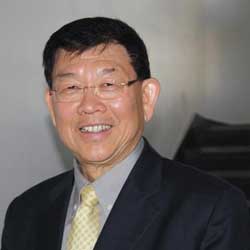Filed Under > International
Why cant we be more like Singapore
A delegation from the tiny city state discusses its educational success
Year after year, test after test, Singapore ’s students consistently emerge at or near the head of the pack on international assessments, leaving many other countries—including the United States
Part of the answer is size. Singapore , an island ‘microstate’ created in 1965 after lengthy British rule, spans a geographic area smaller than the five boroughs of New York City
“Because we are a small and compressed system, our beliefs focus on alignment,” said NIE Director Lee Sing Kong, who, with his NIE colleagues Christine Kim-Eng Lee (a TC alumna), Christine Goh, and Ee-Ling Low, spoke on campus in late October, hosted by the College’s Office of International Affairs following an invitation by TC President Susan Fuhrman. “We have a very close working relationship, in terms of alignment, between the Ministry of Education, the NIE and the schools.”
That’s in stark contrast to the United States
Clearly, Singapore Cambridge
The teaching profession in Singapore
Teachers in Singapore New York City
So Singapore
“Can you imagine how different it would be, if every prospective teacher must come from the top third?” asked TC Professor A. Lin Goodwin, after the presentation. “If they’d receive a salary during their preparation plus have their education paid for?” Similarly, she asked, what would it be like in the United States “if teachers were fully paid, every year, during school time” for professional development, as they are in Singapore
“Yes, it takes money,” Goodwin said. “More importantly, it takes a national commitment.”
The essence of that commitment, Goh, said, is Singapore
Published Monday, Jan. 11, 2010
